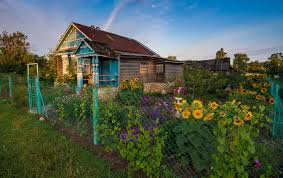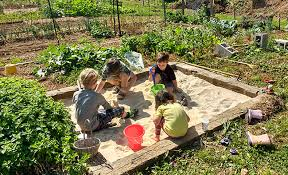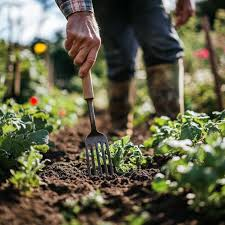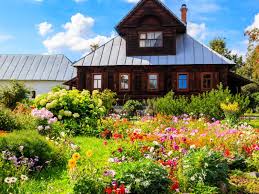Although I’m more of a stay-at-home person than a globetrotter, I’m deeply fascinated by the diverse gardening methods across the world. Recently, I’ve been exploring the gardening practices in Russia, where growing food is a summer priority for over half the population. Gardening is a core part of Russian life, with millions commuting to rural dacha gardens from May to September. While some Russians have gardens at their primary homes (ogoro), many more travel an hour or more to their family’s dacha.
Russian dacha gardeners, known as dachniks, work with an average space of 6 sotkas (about 600 square meters, or 6,458 square feet), and in northern Russia, where the growing season is under 120 days, they supply half of the country’s food. Their success is driven by hard work, resourcefulness, and the culture of generosity. According to Leonid Sharashkin, an expert on Russian food gardening, “self-provisioning culture permeates all aspects of contemporary Russian life.”
What Russian Gardeners Grow
In contrast to Western gardens, where vegetables and fruits are often separated, Russian dacha gardens combine them in a permaculture style. These gardens feature an array of perennial crops, particularly small fruits like currants, raspberries, gooseberries, strawberries, apples, pears, and plums. Many of us who grow fruits in our gardens are unknowingly adopting a Russian style—especially when we use fruit-bearing bushes and trees as natural garden boundaries.
Potatoes hold a special place in Russian gardening, often considered a staple crop. Around 90% of Russia’s potatoes are grown in dacha gardens or small farms. Potatoes are so valued that many businesses offer unused space to employees for growing them, and those who can’t grow their own receive supplies from relatives or even as part of their pension. For Russians, potatoes are simply too important to be grown by others.

Beyond potatoes, Russian gardeners take great pride in growing carrots, onions, cucumbers, garlic, beets, tomatoes, squash, and radishes. Dill is essential in every garden, and most gardens also feature horseradish.
The Community Aspect
Dacha gardens aren’t just about growing food—they are also about community. Children grow up in these garden communities, where open spaces and long-standing relationships create a safe environment for play while adults tend to the garden. Gardening, for many Russians, is about connecting with nature, a concept deeply rooted in Russian culture. The “Ringing Cedars of Russia” books by Vladimir Megre have also highlighted the importance of nature for physical, mental, and spiritual health. Parents use their gardens to teach children about earth stewardship, Russian-style.

Gardening by Hand
Most Russian gardeners rely on hand tools for their work. A popular gardening video shows a Russian gardener using several hoes to control weeds—tools that look surprisingly familiar. Surveys conducted by Sharashkin in the Vladimir region, east of Moscow, reveal that many dacha gardeners save their seeds, and increasingly, gardeners are using plastic tunnels to extend the growing season by a few weeks. Walk-in greenhouses are also used to grow tomatoes, which require warmer temperatures.

The Culture of Sharing
One of the most striking aspects of Russian gardening is the culture of sharing. While Russians pickle, can, dry, and store their harvests, they also pass their excess produce to friends and relatives. For instance, a gardener with three mature apple trees would easily share their extra apples through their network. This level of community sharing is central to Russian dacha culture.
Dill, a staple in Russian gardens, is sown multiple times during the growing season to ensure a continuous supply. Cucumbers and cabbage are also vital crops. As I reflect on my own gardening practices, it’s clear that many of us are adopting Russian gardening methods, even if we aren’t always aware of it.
In the end, Russian gardeners embody a spirit of resourcefulness, community, and sustainability that offers valuable lessons for gardeners everywhere.
